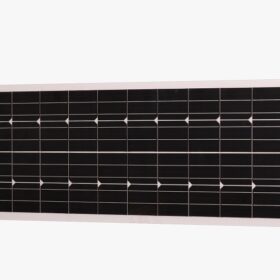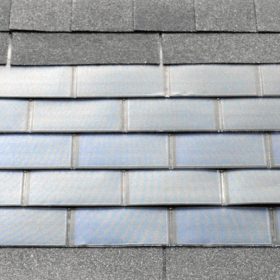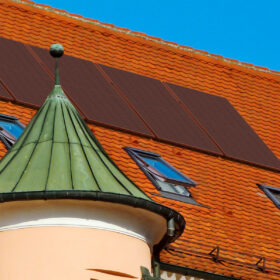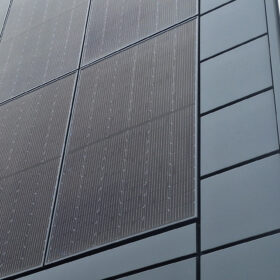Brazilian manufacturer unveils 1 kg BIPV module
Eternit S.A., a Brazilian construction materials supplier, says it has developed a 50 W panel for building-integrated PV (BIPV) applications. The 1 kg module features monocrystalline passivated emitter and rear cell (PERC) tech.
Building-integrated PV in the Netherlands
The latest report from the International Energy Agency Photovoltaic Power Systems Programme (IEA-PVPS) says that building-integrated photovoltaics (BIPV) could be key to help decarbonize cities in the Netherlands, but it warns that the needs of the solar and construction sector must be bridged.
ClearVue integrated solar window tech cracks Middle East construction market
Smart building materials company ClearVue Technologies has cracked the Middle East and Indian construction markets after signing a five-year agreement with Qatar’s largest glass and façade manufacturer.
Semi-transparent PV window based on passive radiative cooling coating
Scientists have manufactured and analyzed a novel coating for semi-transparent photovoltaic glazing that reportedly offers remarkable energy yield and a low heat gain rate. Through outdoor experiments, the researchers also found the glazing also provides satisfactory high-quality indoor lighting conditions.
SolReina’s patented solar window wins best protected invention award in Spain
The windows, composed of glass-glass BIPV panels with thermal and acoustic insulation, are designed for use on building exteriors. They can generate between 150 and 225 W/m2. While currently manufactured and marketed in Spain, they may soon be available in Germany.
Dynamic modeling for building-integrated photovoltaic-thermal systems
Researchers in the Middle East have conducted a series of simulations to assess the technical and economical feasibility of building-integrated photovoltaic-thermal systems. The proposed framework could apply to various building types and geographical locations.
Colored BIPV manufacturers and success factors
A Swiss research team published a review of the technologies used to manufacture of colored building integrated PV, discussing competitive characteristics of more than a dozen products, as well as success factors to drive market development.
DAH Solar launches 380 W BIPV module
The Chinese manufacturer said the new product has an efficiency of up to 19.46% and a temperature coefficient of -0.30% per C. It is available in bright red, light gray, brown, green, blue-green, orange, and ocean blue.
Sonnenkraft unveils 400 W TOPCon panel for terracotta red rooftops
Austrian manufacturer Sonnenkraft has developed a terracotta glass-glass module that aesthetically blends in with tiled roofs. It has an efficiency rating of 20.02%.
Fischer launches clamp-free fastening system for facade PV systems
Fischer has developed a clamp-free fastening system for facade PV systems, with a mounting solution that requires minimal gaps between modules. The company says it is simple to install and dismantle.










